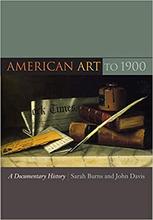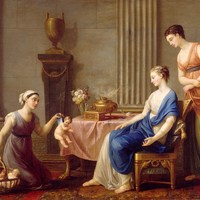If his glowing biography is to be believed, West was born a prophecy and died a legend. Such high praise may seem an exaggeration of his talent, but young Benjamin was so committed to his craft that he fashioned his own brushes out of cat hair. Although his feline friend Grimalkin surely resented the bald patches, West’s ingenuity hinted at greater innovations yet to come. In a long and unconventional career, furry art supplies were the least of many creative exploits.
West developed both his artistic sensibility and his inflated ego at a young age, painting his first portrait at age seven. Benjamin’s delighted parents were unsurprised by their son’s talent, having predicted his importance before his birth. Allegedly, a pregnant Mrs. West was so overcome by the tirade of Quaker orator Edmond Peckover that she immediately went into labor. Peckover, no doubt flattered by the profound effects of his doomsday prophecies, agreed with the Wests that Benjamin was no ordinary child. Benjamin clearly took his parents’ convictions to heart, developing a personality not unlike Draco Malfoy’s. Thinking himself a budding Botticelli, West once declined to ride a horse with a young classmate whose aspirations to a simple life as a tailor he deemed unsavory. If Benjamin’s later refusal of a knighthood from the British crown seems too humble to be true, you’d be right: West thought “Sir” an inadequate title and aspired to a peerage.
Although Benjamin never did become a peer, he settled for a close second: West was both a founder and the second president of the Royal Academy of Arts. He also kept a prestigious inner circle, including Benjamin Franklin (godfather to his son) and King George III, for whom he acted as court history painter. Unfortunately, the flashy duo would split up after West met with Napoleon in Paris shortly after the end of the Napoleonic Wars. George was clearly offended by his star artist’s willingness to exchange pleasantries with Britain’s recent enemies— 19th century monarchs were evidently the territorial sort.
























Looking at the examples, I can easily infer that Benjamin West did a fantastic of capturing the finer details of a scene. This was in a time before cameras, so artists needed to capture the most realistic and finite depictions of the human form that was humanly possible. At the same time, some of his other pics, such as "The Ascension", add elements of fantasy to otherwise historical elements. I mean, I doubt Ben Franklin was surrounded by baby angels when he took his kite and key out to test lightning, but it helps give it a more fantastical and "dream-like" vibe, so to speak.